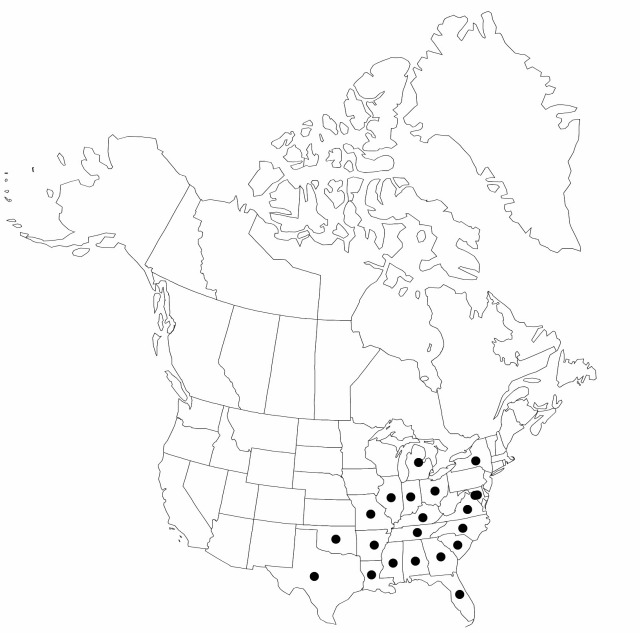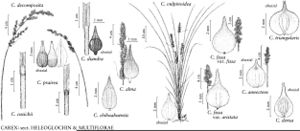Carex decomposita
Descr. Gram., 264. 1817.
Culms 5–120 cm. Leaves: sheaths adaxially strongly dotted purplish red, concave at mouth, not prolonged beyond base of blade; ligules 1.2–5.8 mm; foliage leaf-blades 10–80 cm × 2.5–5.5 (–7) mm. Inflorescences bisexual, evidently paniculate, proximal 3–9 branches well separated, (6–) 7–15 (–18) × 1–4.2 cm; basal branch with 9–33 (–48) spikes; proximal internode 6–27 mm. Pistillate scales translucent with green center, 1.6–2.4 × 1–1.6 mm, shorter, narrower than perigynia. Perigynia spreading, deep olive green to brown, 8–11-veined abaxially, with or without slight median lengthwise depression, without membranous flap toward apex, obpyramidal or obovoid (body very widely obovoid or widely depressed-obovoid), unequally biconvex, 1.8–2.6 × 1.4–2 mm, shiny; beak 0.4–0.7 mm. Achenes oblongellipsoid to widely ellipsoid, 1.4–1.7 × 0.8–1 mm. 2n = 60, 64, 66.
Phenology: Fruiting mid Apr–Aug.
Habitat: Marshes, swamp forests, usually on rotten stumps, floating logs, or bases of trees (often Taxodium) or shrubs (Cephalanthus) on lake, pond, and slough margins
Elevation: 0–300 m
Distribution

Ala., Ark., D.C., Fla., Ga., Ill., Ind., Ky., La., Md., Mich., Miss., Mo., N.Y., N.C., Ohio, Okla., S.C., Tenn., Tex., Va.
Discussion
The chiefly southeastern Carex decomposita is in the Ozark (in sinkhole ponds) but not the Appalachian province. Rare or local over much of its distributional range, it is most frequent on the Mississippi alluvial plain.
Selected References
None.
Lower Taxa
"shortened" is not a number."narrower" is not a number.
